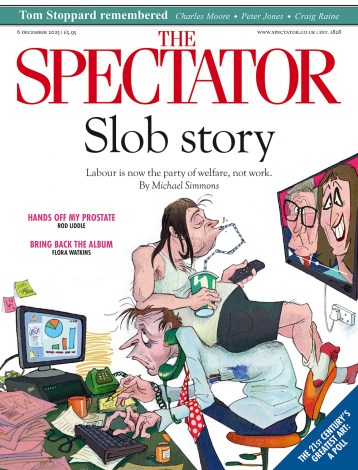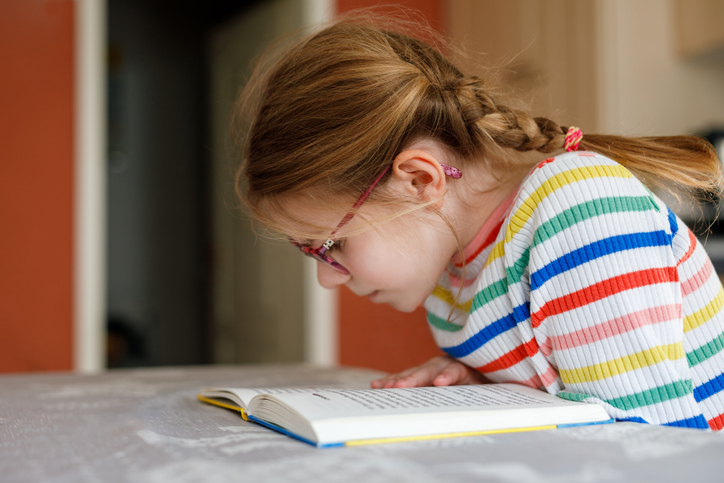The Booker Foundation announced on Friday what it called its most ambitious project in twenty years: the launch of a Children’s Booker Prize. Well, heavens: what am I to do with that? As a columnist, most of my business is moaning and carping. Happiness, as it is said, writes white, and the default position of the comment hack in search of a subject is to find something that annoys him. Aerodynamically speaking, if you’re throwing something from the cheap seats towards the stage, you get a whole lot more range and accuracy when you’re throwing a beer-bottle full of piss than when you’re throwing a bouquet.
And yet, here is something that, walk around it as I will, prodding and muttering, I can find nothing to complain about. I’m amazed that it hasn’t been thought of before. To inaugurate a children’s version of probably the most prestigious English-language book prize does two things, and both are good.
Anything that helps get great books into children’s hands is to the good
In the first place, it effectively recognises something that is often ignored: which is that writing for children requires no less literary craft than writing for adults; and that, sometimes, it involves more. It is absolutely deserving of the attentions of skilled literary critics.
In the second place, it acknowledges not only the artfulness but the importance of what we read as children and what we give our children to read. Every reading life begins with children’s books – and they are the books that stay with us, like the pop songs we hear as teenagers, all our lives. G. K. Chesterton said that the book that had made the greatest difference to his life was The Princess and the Goblin.
Yet every week brings some gloomy survey announcing that reading for pleasure among children is in such steep decline that by 2030 pre-teen bookworms will be huddled in the ruins of libraries like the ragged populations of survivors in 28 Days Later. And here is a rare instance where the price-of-everything crew and the art-for-art’s-sake crowd can agree: not only does childhood reading bring joy; it has measurable impacts on development and life chances. It is what Frank Cottrell-Boyce, the inaugural chair of judges for the new prize, has called ‘invisible privilege’.
So anything that helps get great books into children’s hands, and that gives encouragement to their authors, is to the good. Though established children’s book prizes such as the Carnegie and Newbery Medals may fret about their thunder being stolen, I think there’s room in the ecosystem for all of them. We’ve already lost (among others) the Nestlé Smarties Book Prize, the Guardian Children’s Fiction Prize, the Costa Children’s Book Award and the Blue Peter Book Award.
All that said, it’s not going to be easy. The main Booker Prize already asks judges to compare apples with oranges. At various points over the years, decisions have had to be made, or fudged, over how short a novel gets before it’s a novella, or how short a novella gets before it’s a short story, or if a collection of linked short stories can be counted as a novel. Is a verse novel a novel? (Almost certainly.) Is a ‘graphic novel’ a novel? (More debatable – the prize has mostly decided yes.) And how auto does your ‘autofiction’ have to be before we decide it’s a memoir and so ineligible? Or, conversely, could memoirs whose veracity has been challenged, such as The Salt Path, be recategorised as autofiction and win the Booker? (That one’s more of a thought experiment than a practical problem.)
Children’s writing is no single thing either. Indeed, it’s at least as diverse as the grown-up sort. Large-format picture-books of the sort that make up our first bedtime stories – think, say, Peepo!, or Struwwelpeter or The Gruffalo – are a whole different tradition, and category of thing, than what now get called ‘chapter books’. So are comics. (The not very satisfactory solution I arrived at when compiling my own book on the subject, The Haunted Wood, was: bung them in a chapter of their own.) The division of said chapter books into ‘Middle Grade’ and ‘Young Adult’ (YA), meanwhile, is a relatively recent thing, and it’s mostly an attempt by librarians and publishers’ marketing departments to corral something multifarious into neat boxes.
What of the many illustrious writers who don’t stay in those boxes? Many people would categorise Northern Lights, which opened Philip Pullman’s six-book His Dark Materials/Book of Dust sequence, as a children’s book; but of the concluding volume, The Rose Field, published last week, it’s much harder to make that case. Pullman, in any case, like Alan Garner, tends to reject the label. Many of the greatest children’s books in history weren’t read only, or even mainly, by children.
The organisers of the prize are trying to minimise the apples/oranges problem by restricting it to the so-called ‘Middle Grade’, aka books for children between eight and 12. But as I say, these categories are elastic. Readers don’t fit into marketing boxes any more than writers do, not by a long chalk. A large part of the audience for YA is people in their early thirties, while there are plenty of 11-year-olds tucking gladly into Jane Austen.
But that sort of unruliness is all to the good. It reflects the vitality and unruliness of childhood reading. And it’ll be good for the prize, too. We can expect reams of commentary from the sidelines, arguments over the eligibility of those zany comics-style books which are (many of them) central to getting reading-reluctant kids turning the pages, and fierce judging-panel ding-dongs. It will be, in fact, just like a Booker Prize. Hooray!








Comments